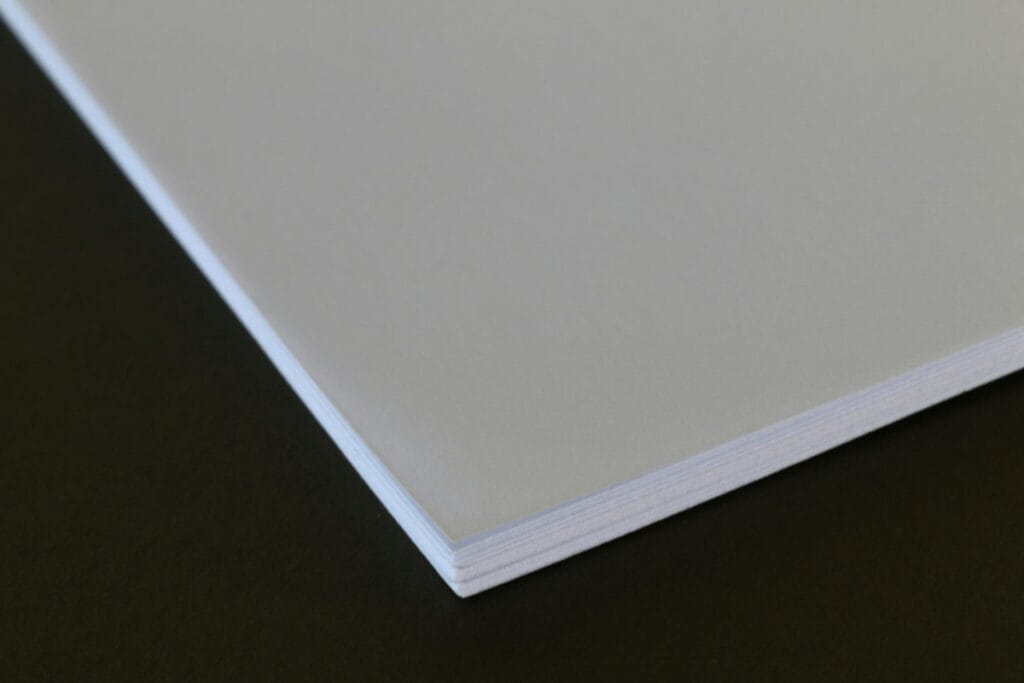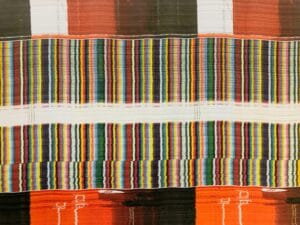Sublimation printers and inkjet printers may appear similar at first glance. Both printer types produce vibrant colors, require ink, and typically have a near-identical rectangular shape.
However, there’s much more to the sublimation printer vs inkjet printer debate than meets the eye. Inkjet printers are all-around machines that print paper documents in your home and office. Sublimation printers utilize specialty ink to interact with various materials, creating long-lasting prints on items such as t-shirts, mugs, phone cases, and more.
There isn’t much overlap between the two beyond photo printing. You can’t use sublimation ink in an inkjet printer or vice versa. You must know exactly what type of printer you need for your specific use case and desired results before making a purchase.
We’ll teach you the ins and outs of inkjet vs sublimation printers. Our Selltoner.com team has decades of knowledge about the ink and toner industry, and we’re happy to answer any of your questions.
Are you wondering what to do with your inkjet ink after switching to a sublimation model (or vice versa)? You can sell unused and unwanted ink to us to earn some extra cash. We offer fast online deals on most types of printer ink and provide pre-paid shipping.
What is a Sublimation Printer?
The sublimation printer vs inkjet printer debate has layers. You’ll need to understand how each machine works first before you can compare them.
We’ll start with sublimation printers, which are remarkably different than your average home or office printer. Sublimation printers put images on fabric, ceramics, and other coated surfaces. There’s a vital material missing from that list: paper. Sublimation does not use paper in the traditional sense, making it a poor fit for documents.
How Sublimation Printing Works
Sublimation printers use high temperatures and special ink. You use transfer paper and sublimation ink to print out a reversed design.
You can then use a heat press to transform the design from a solid to a gas. The high temperatures bypass the liquid stage and bond the image onto the surface at a molecular level. The sublimation ink allows the design to stay deeply embedded in the material. This ensures the design is resistant to wear and tear, smudging, and fading.
Pros and Cons of Sublimation Printers
Sublimation printers are an excellent choice in certain situations, but they aren’t a one-size-fits-all solution. Sublimation printers deliver top-of-the-line color vibrancy and durable prints. They’re the go-to choice for creatives and businesses creating customizable products.
There are some drawbacks to sublimation printers. They are only compatible with specific types of surfaces, such as polyester and ceramics. Ink compatibility is also a concern. Sublimation ink is a unique type of ink that costs more than standard cartridges. You may need to replace or resell all of your unused ink after switching to or from a sublimation printer.
The primary issue with sublimation printers is that they are not suitable for printing documents. This distinguishes do-it-all printers, such as laser and inkjet printers, from sublimation printers.
What is an Inkjet Printer?
Let’s switch gears to the other half of the sublimation printer vs inkjet debate. Inkjet printers are the classic go-to option you’ll find in homes and offices worldwide. They spray ink directly onto paper. Inkjet printers produce a wide range of documents, from simple black-and-white text documents to vibrant color photos.
How Inkjet Printing Works
Inkjet printers work by depositing ink onto paper. They have a printhead that directs tiny nozzles to spray in a specific pattern. There are two main types of inkjet printers: thermal and piezoelectric.
Thermal inkjet printers heat the ink to start the process, while piezoelectric printers use pressure waves and vibrations to eject ink. In either case, the ink dries quickly onto the paper and locks in those smooth results.
Pros and Cons of Inkjet Printers
Inkjet printers have a set of pros and cons just like sublimation machines. The highlight of inkjet printers is their widespread popularity. They are affordable in terms of upfront cost and ink prices. You can use them in both home and office settings.
However, inkjet printers can be a jack-of-all-trades, master of none. For example, look at print results. There’s a significant quality gap when comparing inkjet vs sublimation printers. Inkjet printing results are prone to fading and smudging.
Sublimation Printer vs Inkjet Printer: Key Differences to Consider
It’s time to take a closer look at the sublimation printer vs inkjet printer debate. These two printers have different use cases, ink types, and final result quality. It’s essential to weigh your own needs while considering the inkjet vs sublimation printer comparison.
Printing Purpose and Application
We’ll delve deep into the sublimation printer vs inkjet printer debate. That said, the most crucial factor for you to consider is your purpose for buying a printer. You don’t want to buy a sublimation printer for its durability or an inkjet printer for the price, only to realize you can’t use it.
Inkjet printers have lots of potential use cases. They work on documents, photos, and small creative projects. Sublimation printers have more limited applications. You can only use sublimation ink on transfer paper. You then heat press it onto a ceramic, fabric, or hard surface to create a custom product.
The purposes are vastly different for inkjet vs sublimation printers. You can purchase an inkjet machine for home or office use, while sublimation printers are primarily helpful for creative endeavors.
Media Compatibility
Many consumers think that all printers are the same. You load in paper and ink, produce images, and you’re all set, right?
The truth is that there are significant differences at play between inkjet vs sublimation printers. Inkjet printers work with most types of paper, including photo, glossy, and plain printer paper. However, inkjet printer ink won’t stick to hard surfaces or fabrics. Conversely, sublimation printers excel on polyester, ceramics, and other polymer-coated materials, but are not suitable for paper.
Another quirk of the sublimation printer vs inkjet printer debate is that you cannot use the opposite ink in either machine. You have to know what you want to use your printer for beforehand to avoid wasting your money on ink.
There is one area where printer types overlap slightly: photo printing. Both printers can produce vibrant photos. Inkjet printers use photo paper, whereas sublimation printers require specially coated paper or a suitable surface.
Print Durability
The remaining factors in the Sublimation printer vs inkjet printer comparison are essential in their own right, provided you know your intended use cases.
Sublimation printers are a clear winner in terms of durability. Sublimation ink works at the molecular level to bond with the underlying surface. You can print images and text onto apparel, ceramics, and even some hard surfaces. The picture won’t fade easily over time from sunlight or moisture.
Inkjet printers are naturally less durable. They are only suitable for printing onto paper. You’ll experience smudging and fading if you dip an inkjet photo in water or leave it out in the sun. That said, this isn’t the end of the world for many use cases. The inkjet vs sublimation printer comparison for durability isn’t equivalent because each machine works with different substances.
Print Quality and Color
Both sublimation and inkjet printers are capable of producing smooth, photo-realistic images. Inkjet printers offer excellent color accuracy and create a vibrant shine on photo paper. They still produce consistent and solid results on plain printer paper as well.
However, sublimation printers have slightly better results overall. The sublimation ink blends directly into the surface, creating smooth gradients and sharp details. It’s essential to choose a compatible material, though. Sublimation printers are less effective on non-fabric or non-polymer-coated surfaces, such as ceramics.
Cost Considerations
Inkjet and sublimation printers have two different price ranges. Basic inkjet printers start at $60, while most sublimation printers cost $300 or more. You’ll also find high-end models for each printer type that cost $1000-$2000+.
The price difference is a natural result of each device’s intended use case. Inkjets designed for home use don’t require the complex internal components found in a sublimation printer. Cost differences also extend to ink.
You can find inkjet printer ink at office supply stores and large big-box retailers everywhere. Sublimation printer ink is specialized and has higher manufacturing costs. Inkjet printer ink is not cheap on its own, but it is far more affordable than sublimation ink.
Speed and Volume
You want a printer that can consistently produce the printouts you’re looking for. This doesn’t matter as much when you’re only printing a few pages a month. But for a busy office or home that produces thousands of pages per month, volume is essential.
Inkjet printers are capable of handling small and medium printing volumes. They may slow down with high-res images, photos, and large volumes. Sublimation printers are slower than inkjet machines and are ideal for small batches.
Enterprise models will naturally have better efficiency. The quality of your printer affects speed and volume more than the type of ink it uses.
Ease of Use
Finally, which printer is easier to use?
Inkjet printers are ubiquitous, found in both offices and homes. They are simple to use, with clear buttons and setup. Major inkjet brands have detailed customer support practices that can also help you in case of trouble.
Sublimation printers are naturally more complex. You need to purchase special ink and paper, learn how to use a heat press, and ensure you’re printing on the correct material. There’s a bigger learning curve for sublimation printers.
Still, sublimation printers are the most reliable method for printing images onto fabric and polymer surfaces. The extra difficulty is an acceptable trade-off for achieving those excellent customizable products you’re looking for.
Closing Thoughts on Inkjet vs Sublimation Printer
Overall, the sublimation printer vs inkjet printer debate comes down to one vital question. What are you using your printer for?
Inkjet printers are a fantastic option for general use. They can print documents, images, and even photos. They are relatively cheap upfront and in terms of ink. Sublimation printers have a specialized use case. You use them to print and embed images and text deeply into fabrics and polymer surfaces, such as ceramics.
Inkjet printers are slightly faster, while sublimation printers produce slightly more durable results. But the only overlap between the two is in high-end photo printing. Therefore, the best way to choose between the two is to weigh your intended use cases.
There’s one other critical thing to remember – you can’t use sublimation ink in an inkjet printer (or vice versa). You’ll need to determine what to do with your old, unused ink cartridges if you’re switching between the two.
Did you know you can sell printer ink cartridges for cash? We purchase ink and toner from major brands, including Dell, Canon, Brother, HP, Epson, IBM, and others. Selltoner.com is the #1 ink and toner reverse logistics company.
You can get lightning-fast cash offers on our website and send in your unused cartridges for free with our shipping labels. Speak with our friendly team to learn more about the world of ink, toner, and printers, including the differences between pigment and dye ink printers, as well as the distinctions between printer ink and toner.
Don’t let your unwanted and incompatible ink sit on your shelves, gathering dust. Get a quick cash offer from us today using our easy website!





